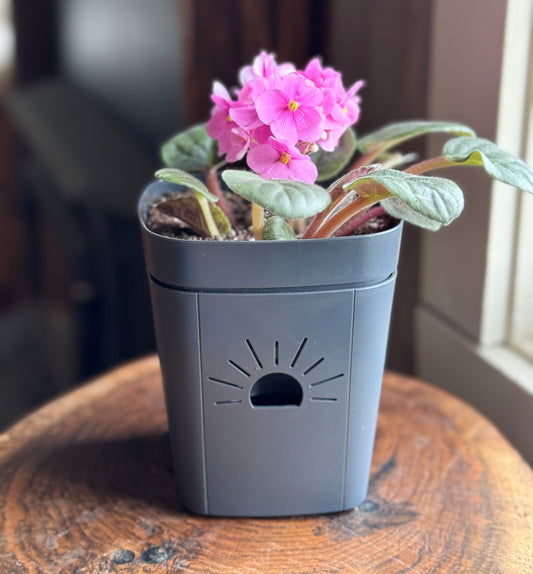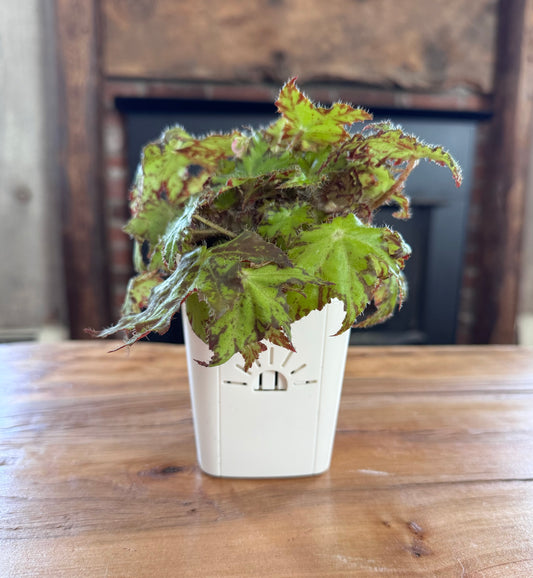Origins
Cacti inhabit diverse regions, from coastal plains to high mountain areas in the Americas. The main centers of drought-adapted cacti are Mexico and the southwestern US. Cacti thrive in the southwestern Andes (Bolivia, Peru, Argentina, Chile) and eastern Brazil. Tree-living epiphytic and climbing cacti live near moist coastal mountains there.
The mistletoe cactus (Rhipsalis baccifera) is unique in that it is native to both the Americas and tropical Africa, Sri Lanka, and Madagascar. Some theorize that migratory birds spread the seeds. Another theory is that the species was transported in the ships of European traders between South America and Africa and then spread further by birds.
Cacti have been spread far and wide, and you can see them naturalized in Australia, the Mediterranean, and Hawaii. In some of those areas, they are now considered invasive weeds.
Light
Requirements
Semi-desert cacti require high light levels to survive. These plants can thrive indoors if placed in a south-facing window that receives direct sunlight for six or hours per day. If you don’t have the ideal conditions, you can place them under a specialized grow light designed specifically for increasing plant growth.
Genus Summary
| GENUS | Cactus |
| COMMON NAMES | Cactus, Sedums. Angel Wings. |
| LIGHT | Desert types = Direct Forest types = bright indirect |
| WATER SCHEDULE | Low. 21 days |
| WATER REQUIREMENTS | Keep the soil evenly moist but not soggy. |
| HUMIDITY | Low. Forty percent |
| TEMPERATURE | 41° to 90°F |
| FEEDING | 1x month |
| TOXICITY | A few are skin or digestive irritants, or hallucinogens |
| PESTS | Rare. Mealybugs, spider mites, scale, white flies. |
| DISEASES | Fungal from excess water. Fusarium rot or Bipolaris cactivora. |
| POT | Maximum root zone oxygen |
| SOIL | Cactus mix or other open airy medium |
| FERTILIZER | Once at the beginning of growing season |
| PROPAGATION | Stem cuttings or seeds |
| PRUNING | Only needed to remove dead stems or spent blooms |
| SIZE | Smallest 0.4 inch. Tallest 63 Feet |
Water Requirements
If you are growing a cactus plant in a Naked Root Planter, you can follow a 21-day watering schedule.
When it comes to cacti growing in traditional planter pots, the water requirements can be complicated. Cacti that originate from semi-desert regions require particularly careful watering, as there is no one-size-fits-all approach. The frequency of watering required will depend on a number of factors, such as the climate and location where they are being grown, the type of soil, and their native environment.
As a general rule, let them dry out thoroughly each time you water them, or else use a moisture meter to help get an accurate reading. Unfortunately, more cacti die due to overwatering than any other cause, so take extra care when deciding how often your plants need to be watered.
Humidity
Cactus plants do not require high humidity. They are perfectly happy at humidity levels of 40 percent.
A benefit of growing cacti indoors is that the dry air and average room temperature are suitable for their needs, whereas other tropical houseplants may require more humid conditions to remain healthy.
Most people who grow plants indoors have wide varieties of plants, all growing in the same environment. It is wise to group your high-humidity plants together and your low-humidity plants together so you can adjust as needed. Too much humidity (70% or more) can cause fungal problems that rot your cactus plant.
Temperature
Cactus plants can tolerate temperatures up to 90°F and a minimum temperature of 41°F. They thrive in the average indoor temperatures of most households.
Toxicity
Most cacti are not toxic to humans or pets. Some cacti have fine hairs that can irritate the skin, and of course, there are spikey varieties that sting. If you have a latex allergy, you should pay special attention, as the sap of some varieties of cacti causes similar reactions.
There are a few species of cacti that are poisonous or toxic.
- San Pedro Cacti contains a hallucinogen called mescaline. If ingested, they also cause intense nausea.
- Peruvian Torch (Echinopsis Peruviana) contains poisonous alkaloids.
- Prickly Pear spines (not fruit) contain toxins that irritate the skin.
- Peyote (Lophophora Williamsii) is a hallucinogenic cactus that also causes digestive distress.
- Barrel Cactus have toxic sap on their ribs and pads that irritate the skin.
- Cholla Cactus has spikes containing juice that is toxic to humans and animals.
- We will mention Euphorbia because they often get mistaken for cacti (they aren’t). But the sap has a compound called cycasin that causes intense diarrhea and vomiting. Keep children and pets far away from Euphorbias.
Other things to watch out for are large cacti that are covered in spines, such as Saguaro, that can grow 50 feet tall. You don’t want to tangle with one of those in the dark. The sap is about as irritating as poison ivy/oak.
Pests and Diseases
Healthy cactus plants rarely are bothered by pests or diseases. Because cactus plants love dry air, red spider mites can show up, as they also like this environment.
Some less common pests are sap-sucking bugs, like mealybugs living on stems and roots. Occasionally you might see a scale insect and rarely whiteflies.
Fungi and bacteria can both cactus plants, but this is almost always a case of overwatering. Fusarium rot occurs when cactus plants get damaged, letting the fungus enter through the cut. Bipolaris cactivora is a pathogen that causes stems to rot.
Pot
It is especially crucial to ensure that the root zone of a cactus has plenty of air circulation. Unfortunately, many people have unknowingly killed their beloved cactus by putting it in a pot that does not allow air to move around its roots as it would in the natural environment. To avoid this issue, be sure to pick a pot with maximum drainage and ventilation.
Soil
The purpose of soil in a cactus pot is to support the plant, provide oxygen, and feed the plant. In the case of cactus plants, an open, airy medium with high oxygen content is crucial, especially when cacti are grown in containers.
A commercial cactus mix works fine for this, or you can mix your own by combining three parts potting soil, three parts sand, and two parts perlite (or pumice). Optionally you can throw in 1 part of pine bark for extra aeration. It is not recommended to add fertilizer to the soil mixture. We will go into this more in the next section.
Fertilizer
Fertilizer can be beneficial to most cacti, but only when used correctly. For many types, it should only be applied at the start of their growth period. Therefore, it is best to keep compost and fertilizer separate from the soil mixture at first. When the appropriate time arrives for your cactus, you can then add it to the soil.
Remember, these plants are like camels, storing water and food and releasing it as they need it. It is better to apply a small amount infrequently, so you don’t burn their tender roots.
Propagation
Cactus plants are fun to propagate. They can be propagated by cuttings or seeds. Commercial growers also use grafting techniques for propagation.
Cactus seeds are surprisingly easy to sprout. Simply cover the seeds in slightly moist soil for 7-10 days at a temperature between 65-85°F, and you will have an abundance of seedlings.
To propagate by cuttings, detach a pad or joint from the parent plant. Place it cut side up and allow it to dry out and form a callous. This usually takes 3-10 days. After that, place the cutting correct side up again, and it will root in the soil with no attention from you.
Pruning
Cactus plants generally do not need much pruning as they are slow-growing species. If your cactus is becoming very tall and toppling over, some pruning may help to encourage it to branch out. It may also be necessary to trim off any dead or diseased parts, as well as old flower stalks and etiolated stems.
As with all houseplant chores, use sterilized pruning sheers and freshly laundered gloves, so you don’t spread pests or diseases from plant to plant.
10 Striking Varieties and Cultivars
- Angel Wings – The Opunta albispina cactus is one of the most favored small houseplants. It is a part of the prickly pear family and produces hairs instead of spikes. It can reach up to two feet in height but can grow as wide as five feet with time. It needs regular trimming to remain small. The Mexican native blooms with pale yellow blossoms and bears edible red fruits when exposed to a full day of sunlight. It is also referred to as bunny ears cactus.
- Rat Tail Cactus – If you don’t have room for a container in your brightest window, Aporocactus flagelliformis, also known as rat tail cactus, is great for a hanging basket indoors. This Mexican native has vibrant magenta flowers. Get a big enough basket for this quickly-growing cactus, as its stems can reach three feet in length. It is available in purple, pink, and orange varieties. Water regularly and provide direct light.
- African Milk Tree – Euphorbia trigona, also known as the cathedral plant, is a type of cactus that is easy to take care of. While it can reach heights of up to 8 feet outdoors, it generally only grows 3-4 feet when kept indoors. This type of cactus has small green leaves growing between its thorns, while the Rubra type has purple leaves. To ensure a long lifespan, make sure to plant it in soil with good drainage.
- Old Lady Cactus – This particular cactus is known for its personality. Mammillaria hahniana grows 8-10 inches tall, and its stems are covered in fine furry white hairs. If your plant is healthy, you may find a ring of pink flowers on top, like a coronet. To keep your plant happy, give it lots of bright light and turn it a quarter turn once a week, so each side gets the same amount of light.
- Bishop’s Cap – Astrophytum ornatum, also known as star cactus, is known for its ball shape and spiky protrusions. With proper care, it can grow to be quite tall, making it a great choice for an indoor floor plant. This cactus also has a tendency to develop a white powdery coating in order to protect itself from the sun, so avoid washing it off. Make sure to provide lots of sunlight and water only occasionally for the best results, and you may even be rewarded with bright yellow flowers!
- Christmas Cactus – The Christmas cactus is quite different from other cacti, with smooth leaves and small, round spines. It produces tubular flowers in several colors. Originating from the Brazilian rain forests, this species requires more delicate care than normal cacti. It should be given filtered light rather than direct sun. Allow the soil to dry out between watering, and provide cooler temperatures (50 to 60 degrees Fahrenheit) if you want it to bloom again. Christmas cactus comes in orange, magenta, red, light pink, and white.
- Barrel Cactus – The Ferocactus genus is covered with elongated stiff spines that provide protection for its fleshy pulp. When grown outdoors, this barrel cactus can reach a maximum height of 10 feet. Indoors, it usually stays in the 2-3 foot range. As a houseplant, it needs plenty of sunlight and very little watering. Plant it in a loose, sandy potting mix. Different varieties have flowers that come in yellow, red, orange, and purple.
- Saguaro Cactus – Did you know that you can have a Saguaro cactus as a houseplant? These columnar cacti grow very slowly but can still make an attractive addition to your houseplant collection. Ensure that the cactus receives plenty of sunlight, or use grow lights if necessary. Water the cactus only when the soil is dry and the pot feels light.
- Moon Cactus – You’ve likely noticed the Moon Cactus (Gymnocalycium mihanovichii) at your local garden store. It can be created by grafting two different cacti together and is a popular choice for a houseplant due to its ease of growing and dynamic colors, such as orange, yellow, and red. To ensure it grows well, make sure it gets plenty of sunlight and only water it on occasion.
- Fishbone Cactus – Epiphyllum anguliger is often grown for its fragrant fall flowers. This type is epiphytic and grows in Mexico, attached to other plants. It has long, flat stems that each produce a flower at the tip. They grow best in a hanging basket or cascading over the side of a container. They are extremely easy to propagate, as every section of the stem will produce roots. They thrive in bright indirect light or with direct light only in the morning. They do best in a soil-free that is chunky, similar to orchids. Since they are forest dwellers, they need a bit more moisture than their desert cousins. Water when 1/3 of the soil is dry. For Naked Root growers, this is 14 days.
Summary of Cactus Plant Care
Caring for cactus plants indoors is a breeze. Most require 6-8 hours of direct sun, though forest-dwelling cacti should be placed in areas with dappled light. Little to no watering, fertilization, or pruning is needed, making them one of the most effortless plants to look after. Be sure to provide adequate air circulation around the roots and don’t overwater, and even the more sizeable types can be grown indoors.





 Verified Buyer
Verified Buyer









